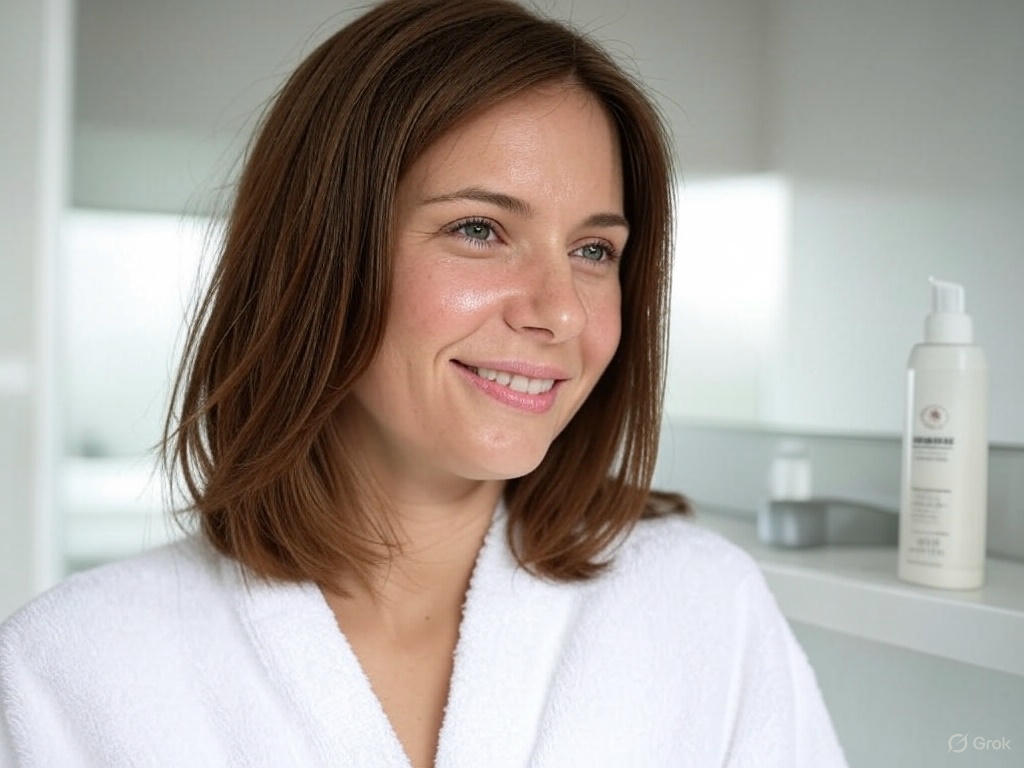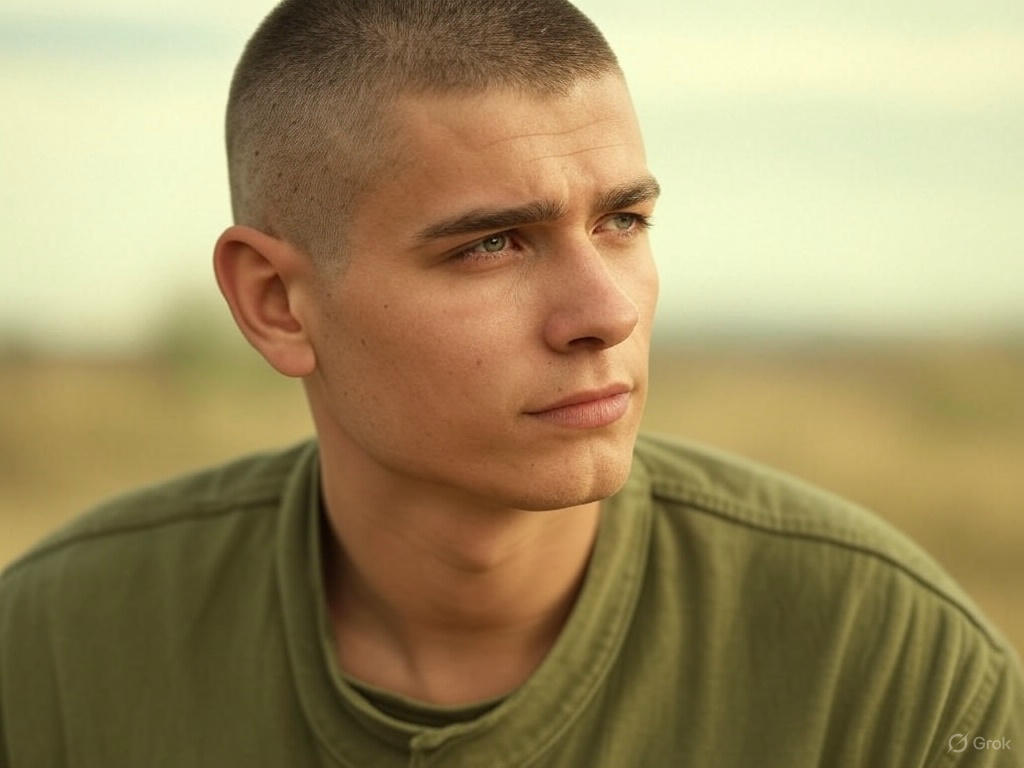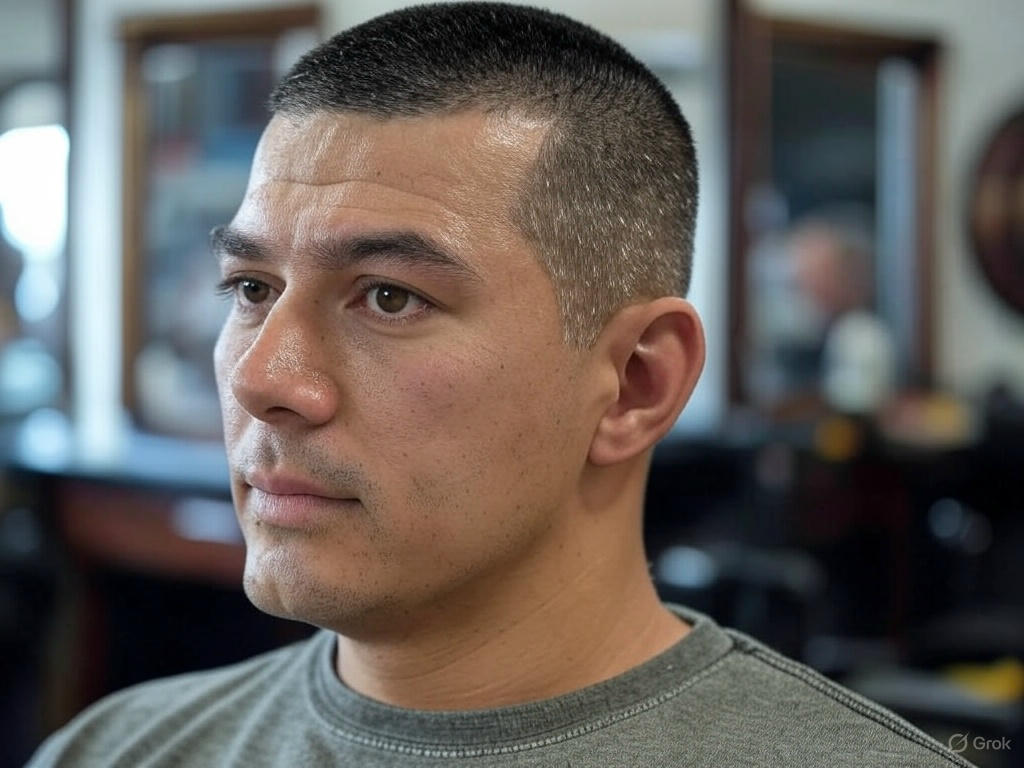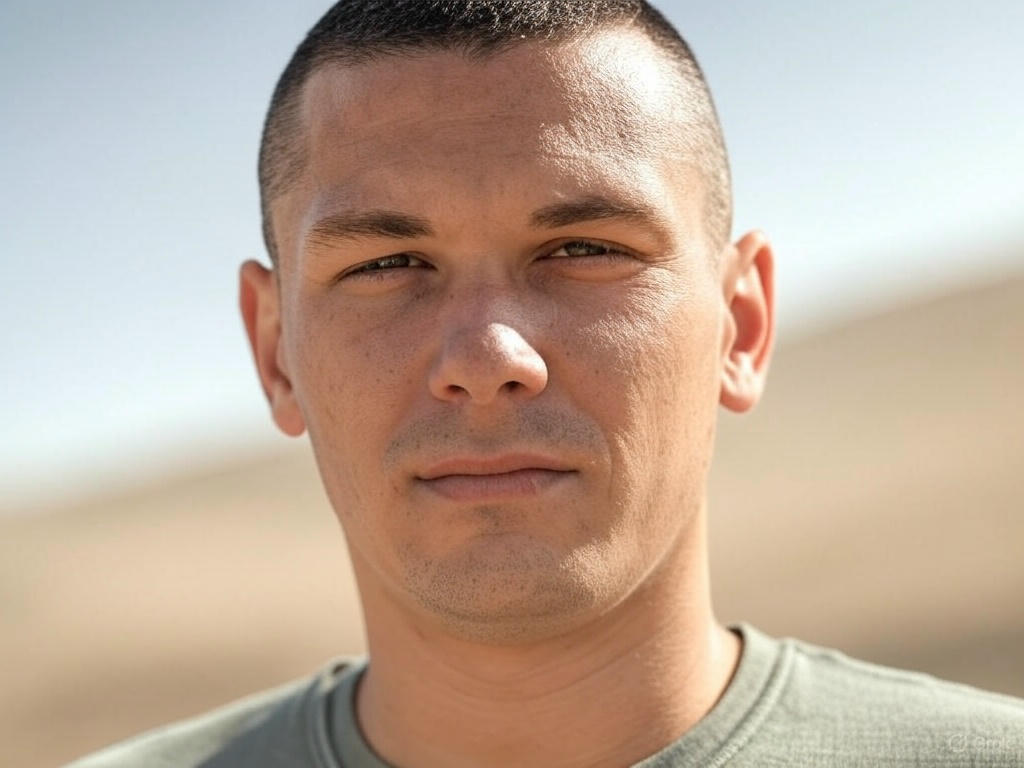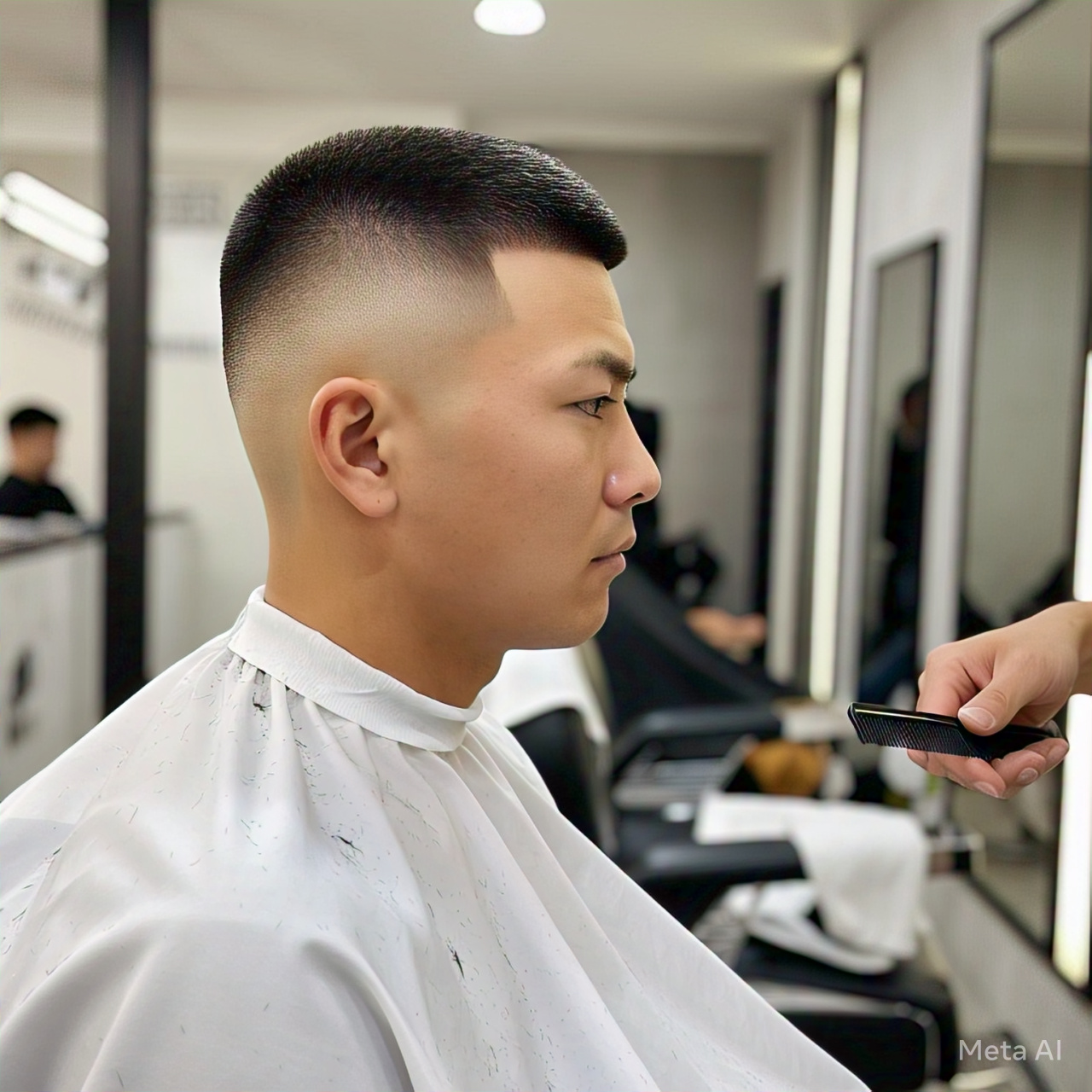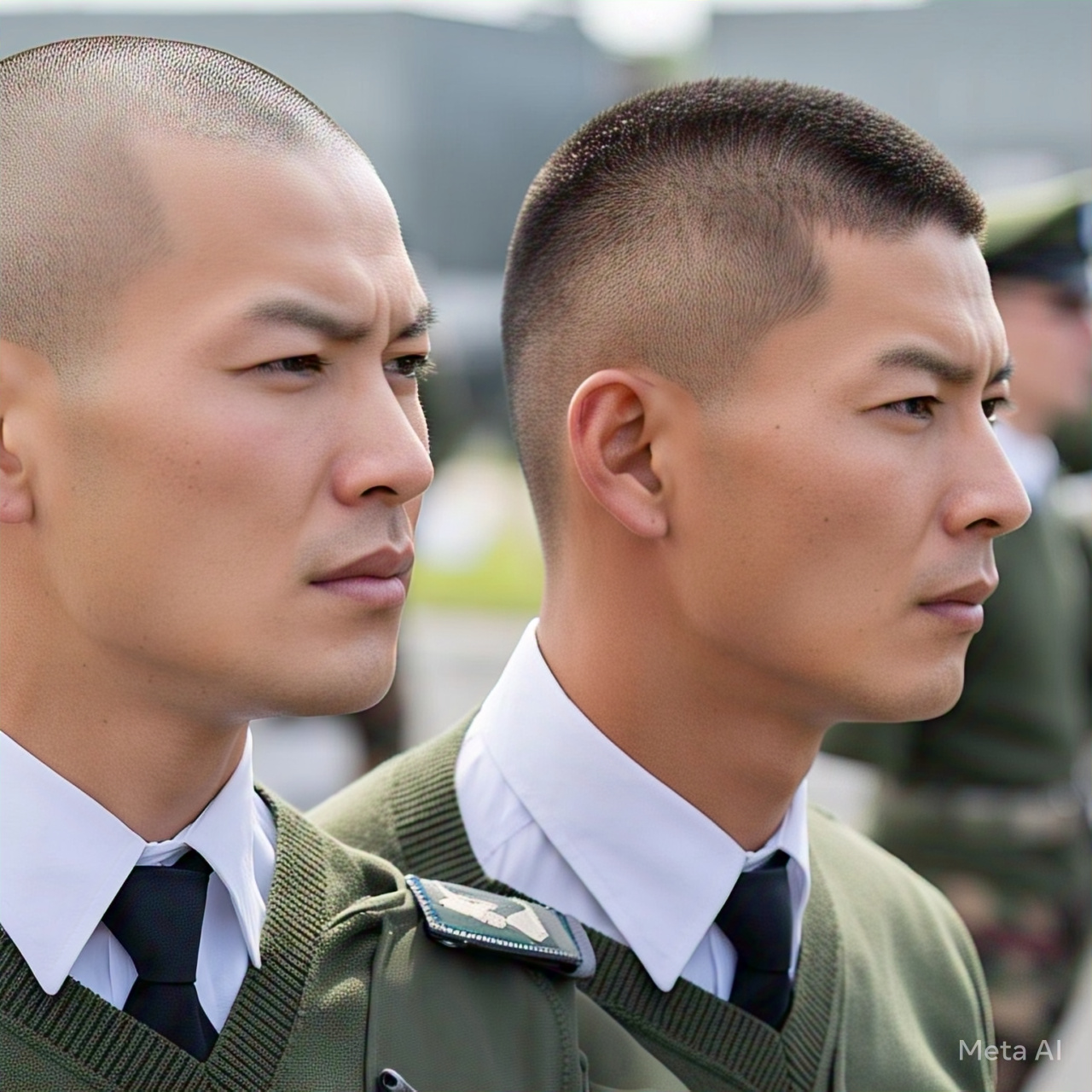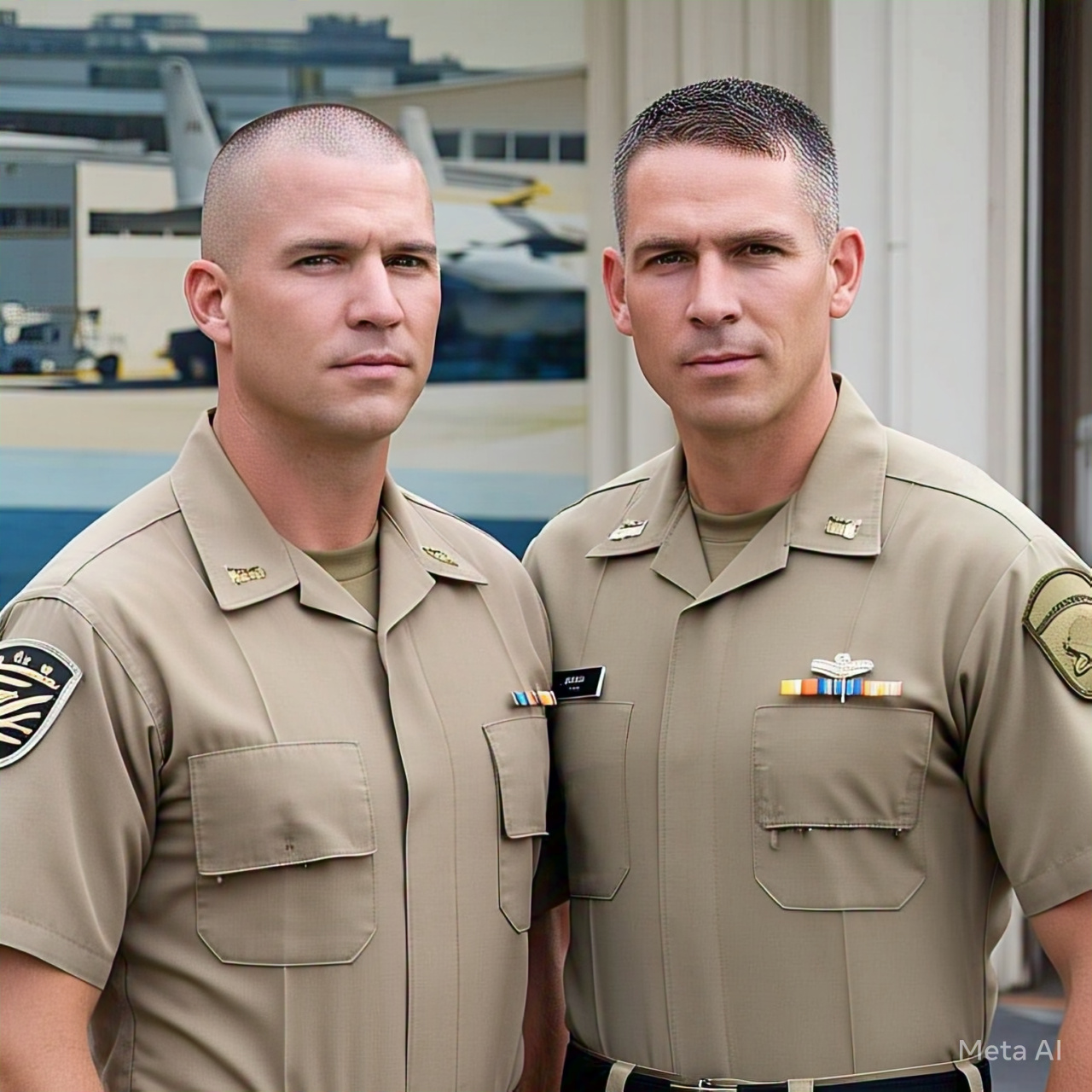The Roots of Military Haircuts and Their Symbolic Weight
Throughout history, the military has been an institution deeply tied to concepts of strength, discipline, and masculinity. One of the most recognizable aspects of military culture is the haircut—a clean, precise, and unmistakably sharp look. While the practicality of short haircuts in combat and field situations is well understood, the deeper meanings and cultural perceptions attached to these styles run far beyond mere convenience. Military haircuts have come to symbolize much more than uniformity and hygiene; they reflect broader societal ideas about manhood, control, power, and personal identity.
Origins and Evolution of the Military Haircut
The tradition of military haircuts dates back centuries, evolving alongside the armed forces themselves. In ancient civilizations such as Rome and Sparta, soldiers kept their hair short not only to prevent enemies from grabbing it during battle but also as a visual marker of discipline and unity. These early militaries understood the psychological power of appearance. Short hair became a signal of allegiance, readiness, and social order.
As modern armies formed in the 18th and 19th centuries, grooming standards became formalized. The introduction of machine clippers in the early 20th century enabled barbers to cut hair quickly and uniformly, leading to the standardization of what is now often referred to as the buzz cut. This haircut became synonymous with boot camp training, marking the psychological transition from civilian life to military obedience.
By the time of World War II, military grooming had taken on symbolic weight. The clean-shaven face and cropped hair represented not just readiness for battle but also a rejection of vanity and individualism. This look reinforced the idea that soldiers were part of something larger than themselves, a collective force bound by shared purpose and visual uniformity.
Association with Masculinity and Discipline
The military haircut’s close-cropped style reflects a traditional view of masculinity, emphasizing traits like control, self-sacrifice, and toughness. In many cultures, these characteristics are seen as hallmarks of manhood, and the military haircut has become a visual shorthand for them. The rigidity of the style leaves no room for flamboyance or personal flair, suggesting a no-nonsense approach to life.
Society has long linked hair with identity, and for men, especially those in or inspired by the military, the haircut becomes a badge of honor. It signifies that the wearer is willing to abide by rules, submit to authority, and endure discomfort in pursuit of a higher goal. In turn, this dedication is often interpreted as a form of masculine virtue, reinforcing traditional gender norms.
Cultural Transmission into Civilian Life
Military haircuts have not remained confined to military bases. Over the decades, they have influenced mainstream style, especially during periods of national pride or war. Veterans returning home brought these cuts with them, and soon the styles were adopted by civilians as symbols of patriotism, respectability, or rugged masculinity.
In the 1950s, for example, the flat top and crew cut gained popularity among young American men. These styles offered a clean and assertive look that suggested both physical readiness and moral clarity. During times of political unrest or cultural change, however, the same haircuts could be viewed as signs of conformity or authoritarianism.
Media Representation and Reinforcement
Film and television have played a significant role in shaping public perception of military haircuts. Characters portrayed as heroes—often soldiers, police officers, or action stars—frequently sport these styles, further reinforcing their association with bravery, control, and masculine virtue. The depiction of these characters often blends toughness with honor, giving the haircut a kind of narrative power.
This influence is especially strong in young men who view these characters as role models. When popular culture repeatedly connects a particular haircut to admired traits, it strengthens the visual language of masculinity. The military haircut thus transcends its practical roots to become a kind of cultural code.
Military haircuts carry a weight far beyond aesthetics. Rooted in centuries of tradition, these styles speak to deeper ideals of discipline, unity, and masculine identity. As the symbol of a tightly ordered world where individualism is tempered by collective purpose, the military haircut commands attention. It is a statement not just about appearance but about the values one holds—or aspires to hold. The roots of this grooming standard are entangled with societal views on gender, power, and identity, making it a rich subject for ongoing cultural discussion. In understanding where these haircuts come from and what they have come to represent, one can better grasp how appearance communicates meaning in both military and civilian contexts.
The Spectrum of Military Haircuts and Their Masculine Messages
While military haircuts are often viewed as a monolithic style—uniform, sharp, and practical—the reality is that there is a range of distinct cuts, each with its own history and symbolic weight. These styles are not simply about convenience or regulation; they express different nuances of masculinity and social roles within both the military and civilian life. From the classic buzz cut to the high and tight, from the flat top to the regulation cut, each variation reveals something about the wearer’s relationship to discipline, power, identity, and traditional gender expectations. In examining the spectrum of military haircuts, it becomes clear that these styles form a visual language—a coded system that communicates masculinity through grooming.
Understanding the Buzz Cut and the Shaved Head
The buzz cut is often the first haircut associated with military life. It is commonly given to recruits during the early stages of basic training as a symbol of shedding individuality and embracing collective identity. This haircut is functional, quick, and exposes the face without distraction. The shaved head takes this concept to its extreme, offering no styling at all—just the raw shape of the scalp.
This extreme simplicity is often linked to the most stoic ideals of masculinity: emotional restraint, physical strength, and total submission to a higher order. A buzz cut, particularly when self-maintained, also suggests self-reliance. Among civilians, those who choose a buzzed or shaved style may be projecting toughness, minimalism, or an uncompromising sense of identity. It can also represent a rejection of vanity, a trait historically seen as incompatible with conventional masculinity.
Men who wear this style outside the military may be veterans maintaining continuity with their service or individuals aligning themselves with military values. In some cases, it becomes a subtle protest against the hyper-stylized grooming culture of modern masculinity. Instead of chasing fashion trends, these men embrace a form of grooming that signals stability, control, and groundedness.
The High and Tight: Precision and Authority
One of the most iconic military haircuts is the high and tight. Characterized by a sharply faded or shaved back and sides with a small patch of slightly longer hair on top, this cut projects precision and dominance. It is especially favored by elite units such as the Marines, and its clean lines and aggressive contrast convey alertness and assertiveness.
This style communicates a form of masculinity that values control not only over appearance but over one’s role in society. It’s often associated with leadership, tactical discipline, and a refusal to be complacent. The high and tight is not a passive style—it makes a statement. In both military and civilian life, it is worn by men who want to express strength, decisiveness, and respect for structure.
Outside the armed forces, this haircut often signals a background in law enforcement, emergency services, or sports. It implies readiness and a readiness to take charge. It can also serve as a subtle symbol of authority, worn by those who view themselves as protectors or enforcers in their personal or professional lives.
The Flat Top: Tradition and Boldness
The flat top emerged as a popular style during the mid-20th century and became strongly associated with military service during World War II and the Cold War era. Its geometric shape and sharp silhouette suggest precision and boldness. The flat top is one of the few military haircuts that allows for a bit of flair while maintaining a disciplined appearance.
Wearing a flat top can signal a certain kind of traditionalism. It harkens back to an era when masculine ideals were tightly defined, and roles were clearly divided. It suggests confidence and a sense of order, especially when maintained with exact edges and clean lines. While less common today, it still carries strong associations with vintage masculinity, authority, and physical readiness.
In modern times, the flat top has seen revivals in subcultures that value retro aesthetics or a no-nonsense image. For some, it is a nostalgic gesture; for others, it’s a declaration of strength through appearance. The man who wears a flat top in today’s context is often sending a message: he values heritage, strength, and clarity of purpose.
The Regulation Cut: Balance Between Military and Civilian
The regulation cut strikes a balance between military formality and civilian versatility. It features neatly trimmed sides and back with a modest length left on top for light styling. This haircut allows for a more natural look while still conforming to the strict grooming standards of the armed forces.
This style suggests a more adaptable, even-tempered form of masculinity. It communicates reliability and composure, traits often idealized in both soldiers and family men. Among civilians, the regulation cut is popular in professional settings where tidiness and approachability are valued. It projects maturity and respectability without aggression.
The man who chooses this haircut may be signaling that he embodies the positive traits of military culture—discipline, punctuality, dedication—while still engaging with the broader, more fluid social world. He respects order but also values interpersonal connection, making this haircut a favored choice for those in leadership or public-facing roles.
The Fade: Bridging Cultures and Masculinities
Although not originally a military cut, the fade has become increasingly popular within and outside of military settings. It involves a gradual transition from short hair at the sides to longer hair at the top, and it allows for creative variations while retaining a sharp, clean appearance.
The fade’s flexibility reflects a more contemporary, multicultural understanding of masculinity. It can be worn in conservative or bold ways, depending on the individual’s preference. In military settings, it may indicate a more relaxed or modern approach to grooming, particularly among younger service members. In civilian life, it bridges the gap between military discipline and cultural expression.
Men who choose the fade often blend tradition with style. They embrace the masculine ideals of confidence and grooming without rejecting individuality. This makes the fade particularly significant in discussions about evolving definitions of masculinity in diverse communities. It challenges the idea that military-influenced styles must be rigid or uniform.
Civilians Imitating the Style: The Aspirational Effect
It is not uncommon for men with no military experience to adopt military haircuts as part of their identity. This trend highlights the aspirational nature of military masculinity. These haircuts often serve as a visual way to connect with the values the military represents—strength, loyalty, and resilience.
For some, the style reflects a desire to project authority or to distance themselves from ambiguity in appearance. In a world that increasingly embraces fluidity, the sharpness of a military cut can signal clarity and commitment. It becomes a personal branding choice, one that associates the wearer with decisiveness, purpose, and control.
At the same time, the civilian adoption of these styles opens the conversation about what masculinity looks like outside institutional frameworks. Can one adopt the visual signals of traditional manhood without subscribing to all of its demands? Can style be a tool for empowerment, even outside its original context? These questions underscore how deeply appearance and identity are intertwined.
Masculinity Beyond the Cut: The Social Perception
Haircuts do not operate in isolation. Their meaning is shaped by social context, cultural background, and the intent of the wearer. Military haircuts communicate a range of messages, but they also invite assumptions from others. A buzz cut might be seen as aggressive or minimalistic. A high and tight might be read as authoritarian. A fade might suggest balance or style consciousness.
These perceptions shape how men are treated, both in social settings and in professional environments. Grooming becomes more than a personal choice—it becomes a signal that others interpret. This dynamic illustrates how deeply rooted cultural narratives influence even the most mundane aspects of appearance.
As society continues to question and redefine what masculinity means, the military haircut remains a potent visual reference. Whether embraced, modified, or rejected, it offers a starting point for deeper conversations about identity, belonging, and values.
Redefining Masculinity Through Military Haircuts in a Changing Culture
As society evolves, so too does its understanding of gender and identity. Traditional symbols of masculinity are being examined, questioned, and reshaped by newer generations who view gender roles as more fluid and inclusive. In this shifting cultural landscape, military haircuts—once firm symbols of rigid masculinity and obedience—are being reinterpreted. These styles, which were once closely tied to concepts like control, power, and toughness, are now becoming part of a broader conversation about how men choose to express themselves. This part of the article explores how military haircuts have adapted to cultural changes, how they interact with modern understandings of masculinity, and how individuals from all walks of life are redefining what these haircuts mean today.
The Decline of Traditional Masculinity and the Rise of Individual Identity
For much of the twentieth century, masculinity was portrayed as a singular ideal: emotionless, dominant, strong, and silent. These qualities were often emphasized through dress and grooming, with military haircuts standing as a visual shorthand for manhood. However, recent decades have seen a shift. Cultural narratives now encourage emotional openness, mental health awareness, and gender inclusivity. As a result, many traditional symbols of masculinity, including military haircuts, are being reexamined.
Younger generations are especially skeptical of rigid gender expectations. They seek authenticity over conformity and value personal choice over institutional tradition. In this context, military haircuts have not disappeared but have instead taken on new meanings. They are no longer seen only as signs of discipline or dominance; they are being adopted as tools of expression, reclaimed by those who want to blend toughness with individuality.
This redefinition does not erase the original meanings attached to these styles but rather adds layers. A buzz cut might still suggest strength, but it could also represent minimalism, rebellion, or gender neutrality. A high and tight might still be tied to control, but it could now be a fashion-forward choice rather than a military symbol. The evolving interpretation of these cuts reflects a larger shift in how masculinity is performed and perceived.
Masculinity Beyond the Binary: Inclusion Through Style
One of the most significant cultural developments influencing perceptions of military haircuts is the growing recognition of gender diversity. No longer limited to the male-female binary, gender identity today is understood as a spectrum. This understanding has created space for people of various identities to adopt styles that once belonged exclusively to a specific gender or role.
Military haircuts, which were traditionally limited to men in uniform, are now worn by individuals of different gender expressions. For some non-binary or transgender individuals, adopting a military-style cut becomes a way to affirm their identity or challenge societal expectations. These cuts offer more than just aesthetics—they provide empowerment, a sense of control over one’s image, and visibility within public spaces.
In this broader social context, military haircuts take on new life. They are no longer bound by strict codes of masculinity. Instead, they become tools for exploring gender in bold and unapologetic ways. A woman with a regulation cut or a person of non-binary identity sporting a fade is not just making a fashion choice—they are making a statement about the freedom to define themselves on their own terms.
This development also allows traditionally masculine styles to lose some of their exclusivity. The haircut no longer serves only to reinforce male identity but can now signify authenticity, courage, or simplicity across all genders. As a result, the power dynamics tied to these cuts begin to shift, allowing for broader participation in their meaning.
The Influence of Media, Fashion, and Subcultures
Popular culture plays a significant role in how military haircuts are interpreted and embraced by modern society. Television shows, music videos, fashion campaigns, and social media platforms all contribute to shaping the public perception of these styles. In recent years, military-inspired grooming has been featured prominently in high fashion and streetwear alike. It has also found a place in hip-hop culture, punk movements, and even avant-garde art scenes.
Celebrities and influencers who wear military-style haircuts often project images that combine traditional masculinity with modern sensibilities. For example, an actor might wear a high and tight on screen while also promoting vulnerability and self-reflection in interviews. A rapper with a buzz cut might also discuss community healing and mental wellness. These juxtapositions challenge outdated ideas that strength and softness cannot coexist.
In the fashion world, military haircuts are frequently presented alongside androgynous or gender-fluid clothing. This pairing further disrupts the assumption that certain grooming styles belong to specific identities. Designers use the contrast to provoke thought, spark conversation, and shift beauty standards. What was once a style reserved for the battlefield is now walking runways and gracing magazine covers, signaling a profound transformation in its symbolic role.
Subcultures have also played a role in transforming the meaning of military haircuts. In queer communities, for instance, the buzz cut is often adopted as an act of resistance—both to mainstream beauty norms and to heteronormative ideals. In punk and alternative circles, these styles symbolize rebellion, not conformity. They are ways to challenge the status quo, not embrace it. This cultural remixing shows how versatile military cuts have become in the hands of those seeking to disrupt traditional power structures.
Military Style in Civilian Contexts: Shifting Norms in the Workplace and Beyond
As society becomes more accepting of diverse identities, military haircuts have made their way into civilian settings with new interpretations. In the past, these cuts were associated with strict authority or professional seriousness. Today, they can convey creativity, confidence, and self-discipline without evoking rigid masculinity.
In corporate environments, for example, a neatly styled regulation cut may suggest professionalism, but no longer exclusively male professionalism. Women and non-binary individuals in leadership roles have embraced this style to project confidence and clarity. The haircut becomes a strategic tool—one that transcends gender but still communicates strength.
In education, healthcare, and social work, shorter military-inspired cuts are often seen on individuals who value efficiency and presence. These styles can communicate dedication without being aggressive. In these settings, the haircut is no longer just about how it makes the wearer look, but about how it helps them function, interact, and lead.
Even in more creative fields, where appearance is less regulated, military haircuts are used as artistic expressions. A filmmaker might choose a buzz cut to reflect a minimalist ethos. A visual artist might embrace the flat top as part of a larger aesthetic narrative. The style becomes part of the story they’re telling through their work, their image, and their identity.
By appearing in so many diverse settings, military haircuts have become less about adherence to one kind of masculinity and more about intentional self-presentation. They still carry the weight of their history, but they are no longer confined by it. Instead, they offer a starting point for new conversations about identity, purpose, and presence.
Intersectionality and the Rewriting of Style Codes
Understanding how military haircuts evolve also means recognizing the influence of race, class, and culture. For many men of color, particularly Black and Latino men, styles like the high fade, the skin fade, or the cropped flat top have long been part of cultural identity. While these cuts overlap with military grooming, their meaning extends far beyond the armed forces.
For Black communities, these styles are often connected to barbershop culture, personal pride, and resistance against assimilation. The clean lines and sharp fades serve as forms of self-respect and community solidarity. When military and cultural meanings intersect, the result is a rich and layered visual code that challenges simplistic interpretations.
Class also plays a role in how military cuts are worn and perceived. In working-class communities, these styles may reflect practicality and low-maintenance values. They are accessible, easy to maintain, and communicate readiness. For some, they offer dignity without extravagance. For others, they are a symbol of discipline in environments where control may be hard to come by.
This intersectionality reveals how military haircuts are far from neutral. Their meanings depend on who wears them, how they are worn, and in what context. They may carry prestige in one community and judgment in another. Understanding this complexity is key to appreciating how style interacts with identity in modern society.
The Future of Military Haircuts and the Evolving Face of Masculinity
Military haircuts have a long and storied past, deeply connected to tradition, authority, and national identity. But their future is less certain and far more open to interpretation. As the boundaries of masculinity continue to stretch, shift, and evolve, the symbols that once defined male identity are being reassessed and repurposed. In this final part, the focus turns toward what lies ahead. What will military haircuts mean in a world where gender roles are no longer rigid? How will they continue to influence fashion, identity, and culture? And perhaps most importantly, how can this iconic style continue to thrive without being trapped in the ideals of the past? The answers to these questions reveal much about the direction society is heading and how individuals are choosing to express their sense of self.
Adapting Military Style in a Digital Age
Technology has reshaped the way people engage with style. Social media platforms like Instagram, TikTok, and YouTube have turned everyday individuals into trendsetters. What once was seen only in military barracks or barbershops is now being broadcast to millions across screens. Military haircuts, once limited to those in uniform, are now being viewed, critiqued, and reinterpreted by a global audience.
This digital exposure has helped the military cut evolve into a canvas for personal expression. Whether it’s a minimalist buzz cut embraced by digital nomads, a stylized fade worn by influencers, or a throwback flat top revived through vintage aesthetics, these styles are constantly being renewed through online culture. Tutorials, reviews, and transformation videos have made grooming knowledge more accessible than ever. As a result, people from all backgrounds are free to experiment with military-inspired styles without feeling tied to the values they once represented.
In this digital era, the haircut’s meaning becomes more flexible. A close shave might signal strength to one person and artistic clarity to another. The same haircut that once symbolized order can now represent rebellion, minimalism, or even calmness. With algorithms promoting trends in real time, what defines masculinity—and how it’s worn—is in constant flux.
Military Institutions Confront Modern Identity Politics
Despite the cultural evolution of military haircuts, the institutions that birthed them still maintain grooming standards rooted in tradition. Most branches of the military continue to enforce strict regulations around appearance, citing uniformity, safety, and discipline as their reasons. However, even these institutions are beginning to face pressure to change.
In recent years, military organizations around the world have been asked to reconsider their policies regarding haircuts, facial hair, and grooming. These discussions often revolve around inclusivity—especially for women, LGBTQ+ service members, and individuals from diverse cultural or religious backgrounds. Some have questioned whether short hair should remain a requirement, particularly when it creates barriers for people who otherwise meet all performance and conduct standards.
There have already been changes. Some military branches have eased rules around hair length for women and adjusted standards to respect religious practices. Facial hair, once universally banned, is now permitted in some cases. These developments, though still limited, represent a growing recognition that tradition alone should not dictate identity.
This slow shift suggests that even within rigid systems, the meaning of style is changing. Military haircuts may always be a part of armed forces identity, but the way they’re enforced, interpreted, and chosen could continue to adapt. As institutions acknowledge the complexity of identity, the style that once symbolized uniformity may eventually stand for diversity and inclusion.
The Role of Education and Parenting in Redefining Masculine Norms
Younger generations do not inherit ideas of masculinity passively. They are shaped by schools, families, and social circles. As conversations about gender and self-expression become more common in classrooms and homes, military haircuts are no longer seen just as a default for boys, but as one of many options for anyone seeking to express a clean or bold look.
Parents today are more likely to give their children the freedom to explore different appearances. A boy may choose a crew cut because he likes how it feels, not because it signals toughness. A girl may want a fade because she thinks it looks cool, not because she’s trying to look masculine. Teachers and counselors, too, are beginning to emphasize self-acceptance over gender conformity. These subtle changes help remove the weight of symbolism from styles that were once loaded with expectations.
Over time, these shifts can influence broader cultural patterns. When children grow up without feeling that certain styles belong to certain genders, military haircuts lose their status as a masculine uniform. Instead, they become neutral choices—styles defined not by social codes, but by personal preference. This move toward individual expression, nurtured from a young age, may be the most powerful force shaping the future of these iconic cuts.
Sustainability and Practicality in Modern Grooming
In a world increasingly concerned with sustainability, many are reconsidering their grooming habits. Military haircuts, which require minimal maintenance and little product use, appeal to people looking to reduce their environmental impact. These styles are not only affordable but also practical for individuals who want a no-fuss routine.
This return to simplicity aligns with minimalist trends in design, fashion, and lifestyle. For people who are decluttering their homes and cutting down on consumerism, a buzz cut or high and tight represents freedom from excess. It’s a grooming decision that saves time, saves money, and aligns with broader values of living consciously.
Barbershops, too, are responding to this trend. Many now emphasize clean cuts and classic services over flashy trends. Military styles fit into this new model because they offer a timeless look that doesn’t rely on fast-moving fashion cycles. As men—and people of all genders—seek grooming habits that support a simpler, more focused lifestyle, these haircuts may find renewed popularity not because they are symbols of masculinity, but because they are symbols of intentional living.
Personal Style as a Political and Social Statement
In today’s climate, appearance is never just about looks. It’s about values, identity, and often resistance. Choosing a military haircut can still be a political act, but the meaning varies depending on context. For some, it signals support for tradition, patriotism, or conservative ideals. For others, it may signal strength without submission, especially when worn by those outside the traditional mold—women, queer individuals, or people of color using the style to subvert expectations.
At protests, in art galleries, or during public appearances, style becomes language. Military haircuts are part of that language, used by individuals to communicate resilience, clarity, or seriousness. These cuts can say, “I’m not here to play games,” or “I value discipline,” or even “I won’t be boxed in.”
In this way, the future of the military haircut is not neutral, but multifaceted. It has the potential to hold many meanings at once, depending on who wears it, why, and how. And as long as people continue to seek power in their presentation, these cuts will continue to carry weight—sometimes as homage, sometimes as protest, and sometimes as pure personal style.
Conclusion
The military haircut began as a symbol of order and masculinity, shaped by the strict codes of military life. But it has grown beyond its origins. In a world where gender is increasingly fluid and identity is personal rather than prescribed, this once-rigid style has found new meaning. It now exists across boundaries—gender, race, class, and profession—and continues to evolve with each new generation that picks up the clippers or steps into the barbershop.
What a military haircut says about a person is no longer fixed. It might say strength, or it might say rebellion. It could signal simplicity, or it could symbolize resistance. It may mean discipline for one person and freedom for another. That flexibility is what gives the style its power and what ensures its place in the future.
As masculinity continues to be explored, questioned, and reimagined, military haircuts serve as a powerful reminder of how personal grooming can both reflect and shape identity. The clippers may buzz the same, the lines may still be sharp, but what those lines represent is changing—and that change is both necessary and beautiful.
